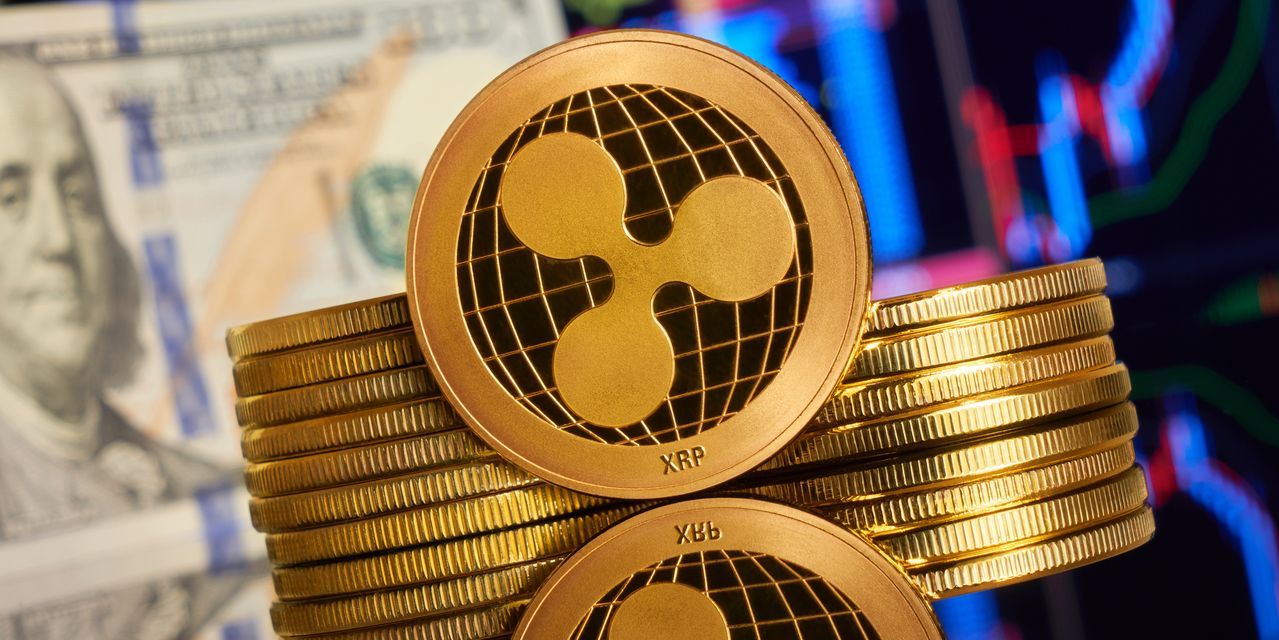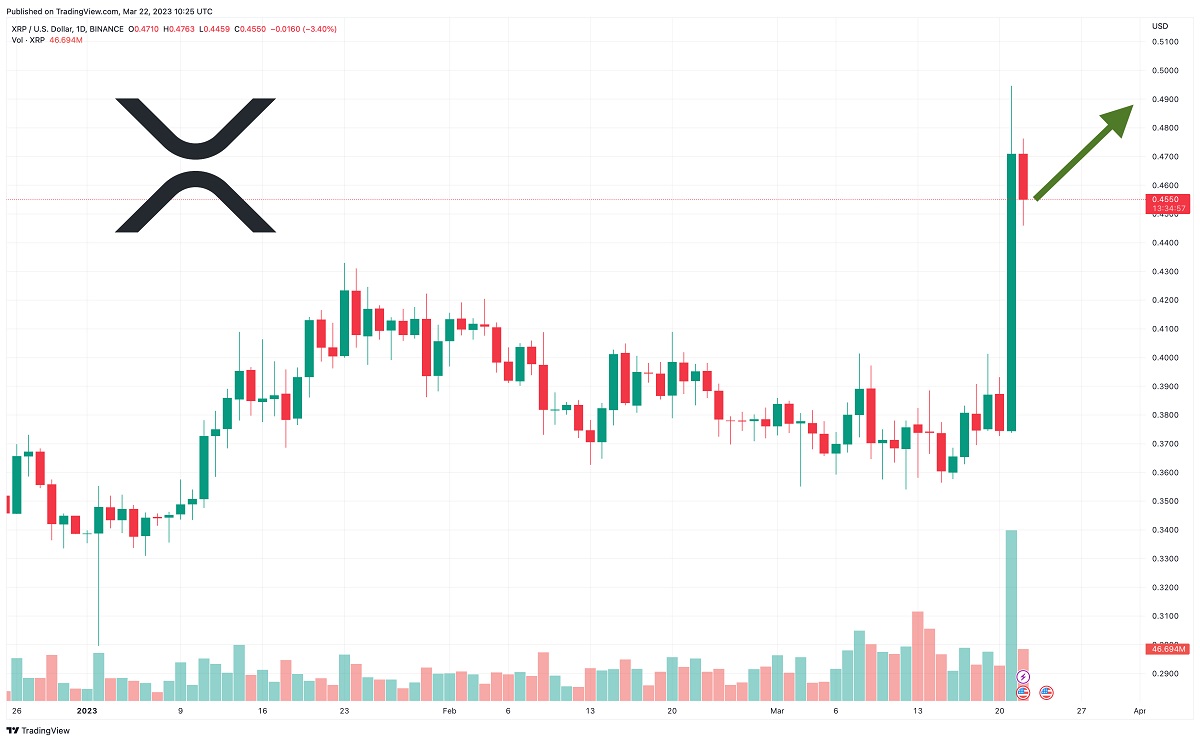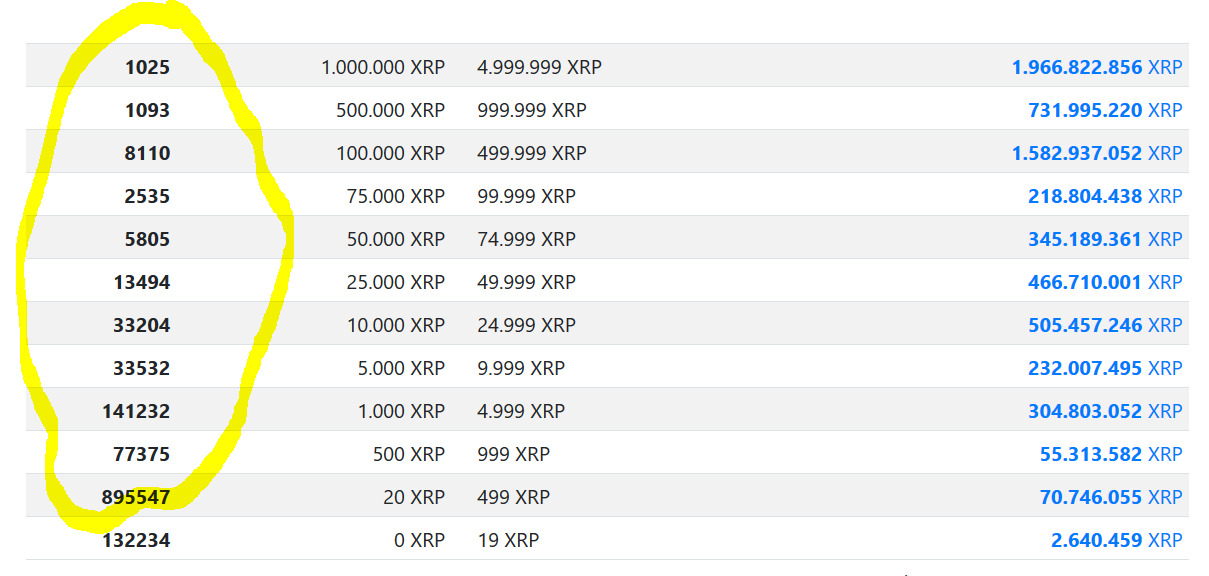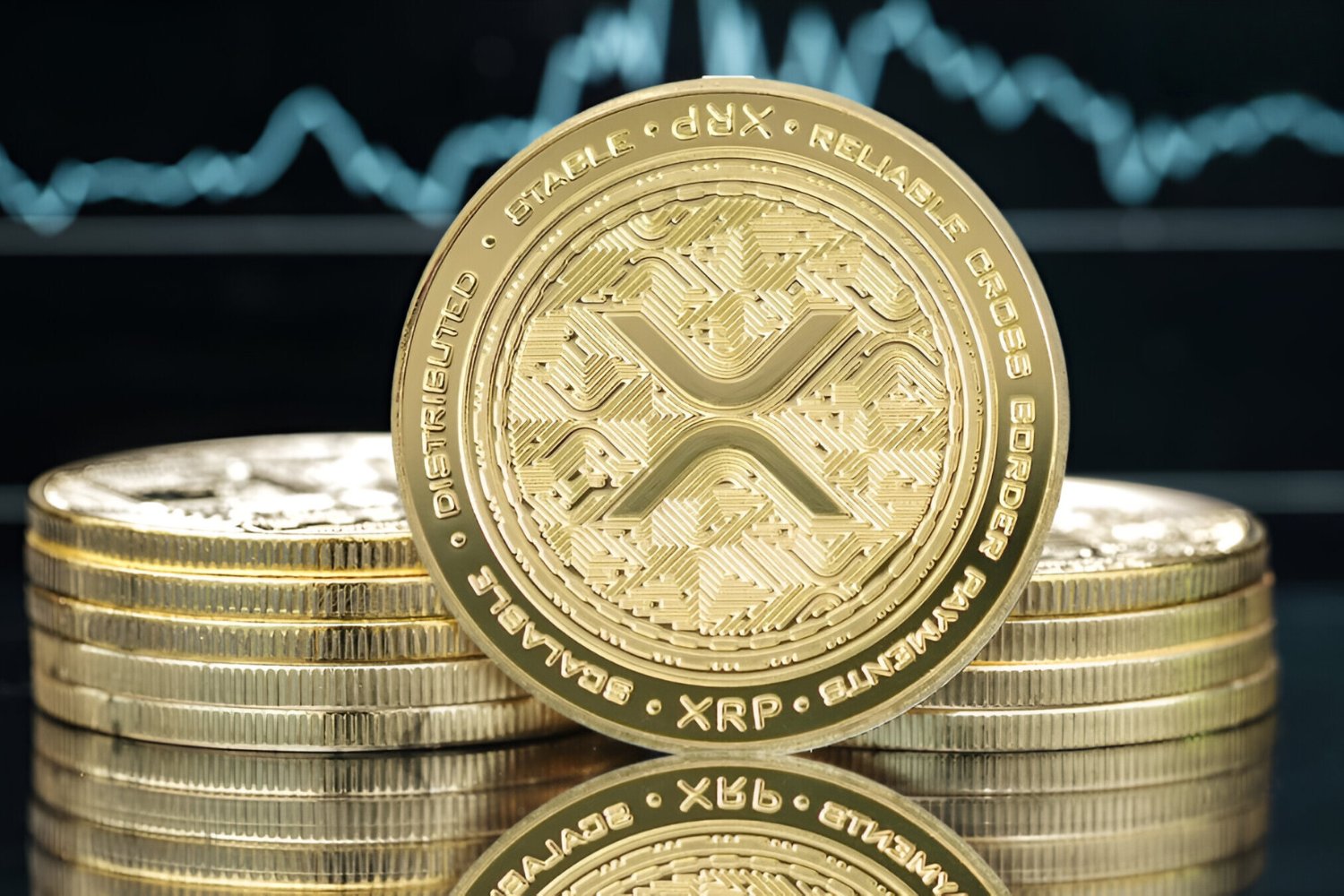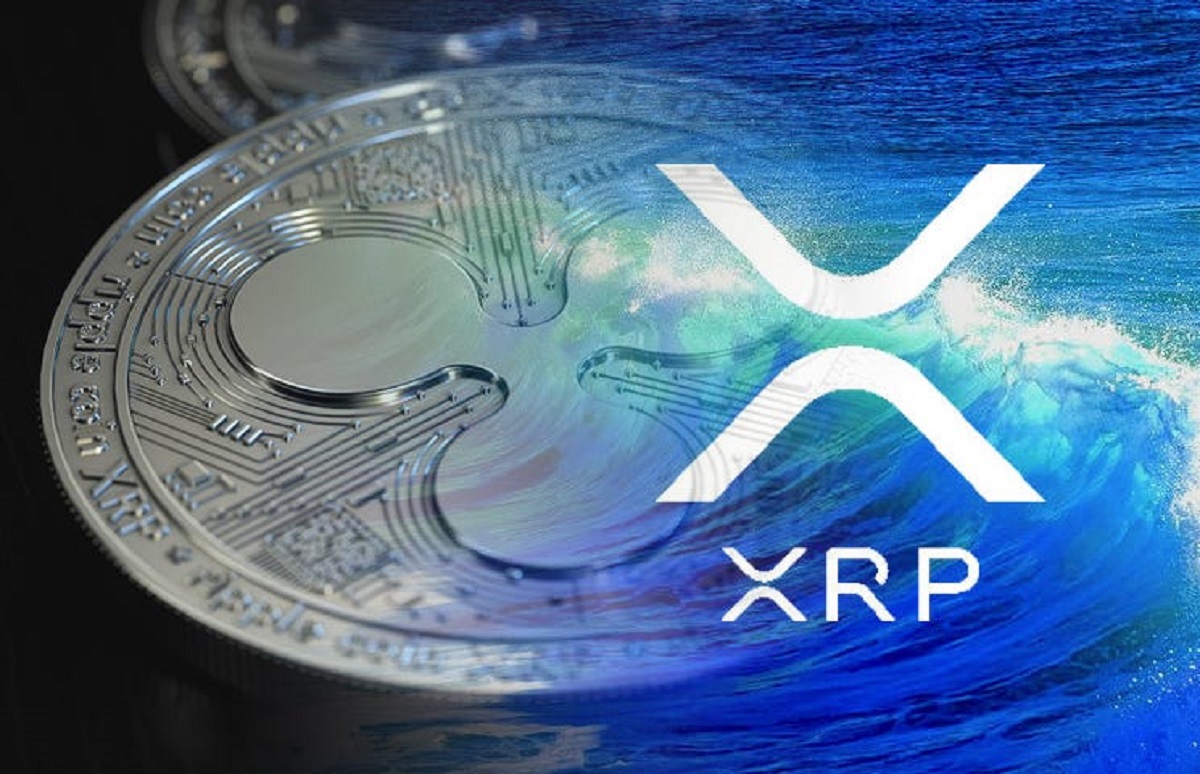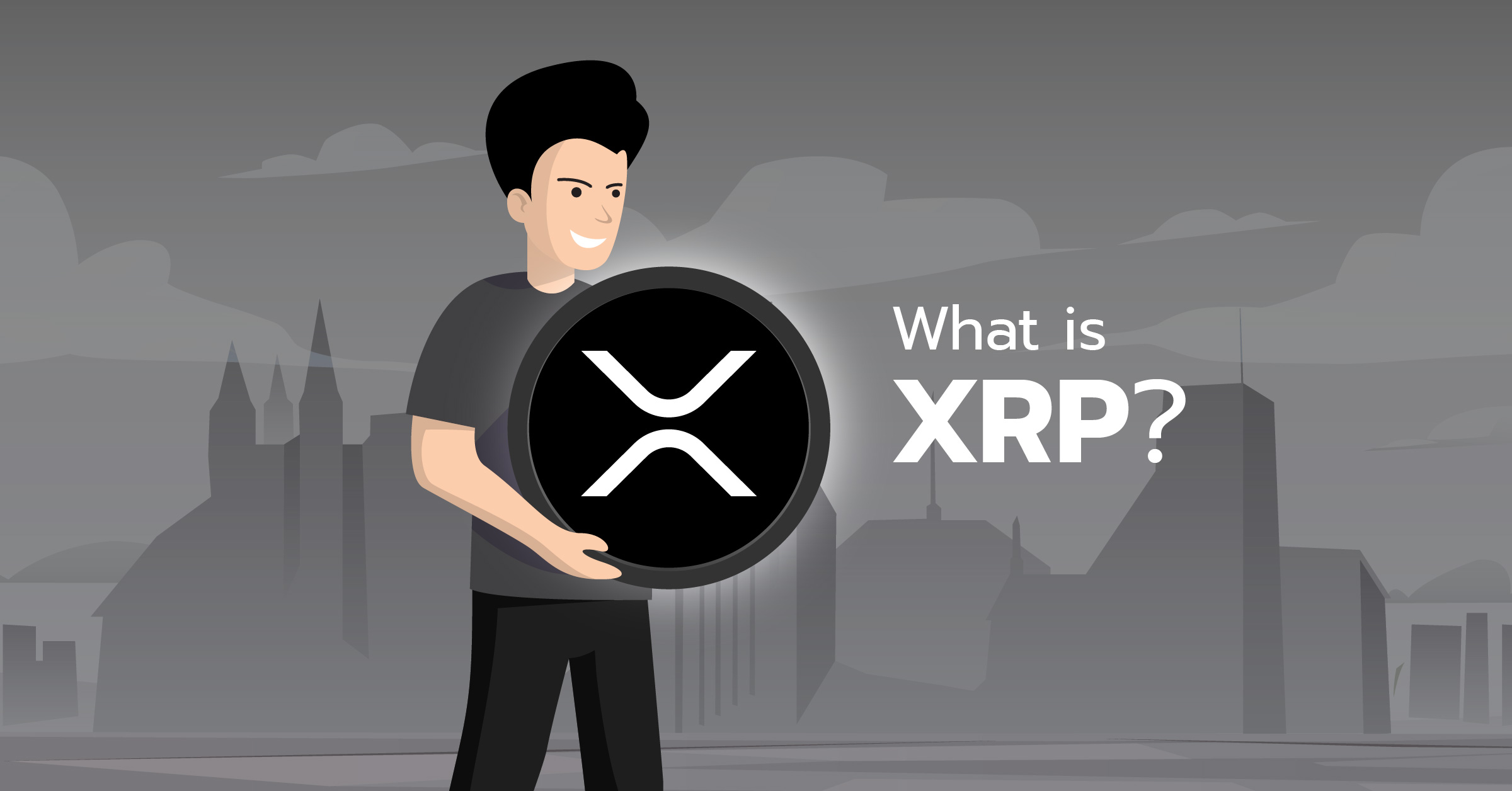Introduction
XRP is a cryptocurrency that has gained significant attention in the digital currency market. It stands out among other cryptocurrencies due to its unique features and use cases. Created by Ripple Labs in 2012, XRP aims to facilitate fast and cost-effective cross-border transactions.
Unlike traditional banking systems, which rely on intermediaries for transferring funds internationally, XRP utilizes blockchain technology to enable direct peer-to-peer transfers. This eliminates the need for third-party involvement and reduces transaction costs, making XRP an appealing option for individuals and businesses seeking efficient global financial transfers.
As a cryptocurrency, XRP operates on a decentralized network, meaning that it is not controlled or governed by any central authority. Instead, it relies on consensus validation from a network of independent validator nodes to confirm and authenticate transactions.
With its impressively fast transaction times and scalability, XRP has gained popularity among financial institutions, payment providers, and remittance services. It has become a key player in the rapidly evolving world of digital finance.
In this article, we will explore the various facets of XRP, including its history, functionality, key features, use cases, and how it differs from other popular cryptocurrencies like Bitcoin and Ethereum. We will also discuss XRP wallets, buying, and storing XRP, and delve into the future potential of this exciting digital asset.
What is XRP?
XRP is a digital asset and cryptocurrency that was created by Ripple Labs. It serves as a bridge currency in the Ripple payment protocol, facilitating fast and efficient cross-border transactions. Unlike traditional banking systems that rely on traditional fiat currencies for settlements, XRP is designed to enable the seamless transfer of any form of value, be it fiat currency, cryptocurrency, or even commodities.
One of the key features that sets XRP apart is its speed. While traditional banking systems can take days for international transactions to settle, XRP transactions are typically completed in a matter of seconds. This allows for near-instantaneous transfers of funds across borders, making it an attractive option for financial institutions, remittance services, and individuals who require fast and reliable cross-border transactions.
Another important aspect of XRP is its cost-effectiveness. Traditional remittance services often come with high transaction fees and hidden charges. In contrast, XRP offers a cost-efficient solution for cross-border payments, as it eliminates the need for intermediaries and reduces transaction costs. This makes it an ideal choice for individuals and businesses seeking to optimize their international money transfers.
Furthermore, XRP operates on a decentralized network, ensuring that no single entity has control over the currency. Transactions on the XRP network are verified and confirmed through consensus, achieved by a network of independent validator nodes. This decentralized approach ensures the security and integrity of the network, making XRP a reliable and trusted cryptocurrency.
In summary, XRP is a digital asset and cryptocurrency that is designed to facilitate fast and cost-effective cross-border transactions. With its impressive speed, low transaction costs, and decentralization, XRP has garnered attention from financial institutions and businesses worldwide. In the next section, we will delve into the history of XRP to understand its development and journey in the cryptocurrency market.
History of XRP
The history of XRP dates back to 2004 when a digital payment protocol called Ripplepay was first conceived by Ryan Fugger. Ripplepay aimed to provide a decentralized peer-to-peer payment system. However, it wasn’t until 2012 that Ripple Labs, led by Chris Larsen and Jed McCaleb, launched XRP as a digital asset to serve as the native cryptocurrency of the Ripple protocol.
XRP quickly gained attention in the cryptocurrency community due to its unique goals and features. Ripple Labs intended for XRP to provide a solution to the inefficiencies and high costs associated with cross-border transactions. By utilizing blockchain technology, XRP aimed to enable fast, secure, and low-cost international money transfers.
In 2013, Ripple Labs introduced the XRP Ledger, a decentralized blockchain-based platform. This allowed for the creation, distribution, and management of XRP tokens. The XRP Ledger, known for its scalability and efficiency, became the foundation of the XRP ecosystem.
Over the years, Ripple Labs has formed partnerships with various financial institutions, payment providers, and remittance services to promote the adoption of XRP. These partnerships have helped to establish XRP as a viable solution for cross-border payments, with many institutions utilizing XRP to enhance their payment infrastructure and reduce costs.
In 2017, XRP experienced a surge in popularity and value, with its market capitalization reaching new heights. It became the third-largest cryptocurrency by market cap, trailing behind Bitcoin and Ethereum. This increased attention brought both excitement and controversy to XRP, as some questioned its centralized distribution and regulatory concerns.
In recent years, Ripple Labs has been actively working to create further use cases for XRP. They introduced products such as xRapid, which utilizes XRP for liquidity, enabling real-time settlement of cross-border transactions.
Looking towards the future, Ripple Labs continues to drive the adoption and development of XRP. The company is focused on expanding XRP’s use cases beyond cross-border payments, aiming to bring its benefits to various industries that require fast and efficient value transfer.
With its rich history and continuous innovation, XRP remains a prominent player in the cryptocurrency landscape. In the next section, we will delve into how XRP works and the underlying technology behind it.
How does XRP work?
XRP operates on a decentralized network and utilizes a technology called the XRP Ledger to facilitate transactions. Unlike traditional cryptocurrencies, such as Bitcoin and Ethereum, XRP does not rely on mining for transaction validation. Instead, it uses a unique consensus algorithm, called the Ripple Protocol Consensus Algorithm (RPCA).
The RPCA is designed to achieve fast and secure transaction validation. It works by a network of independent validator nodes reaching consensus on the validity and order of transactions. This consensus process ensures the integrity of the XRP Ledger and prevents double spending.
When a transaction is initiated on the XRP Ledger, it is proposed to the validator nodes. These nodes then independently validate and confirm the transaction. Once a consensus is reached among the majority of the validator nodes, the transaction is considered valid and is added to the XRP Ledger, making it immutable.
One of the key advantages of XRP is its scalability. The XRP Ledger has the ability to handle a high volume of transactions per second, making it suitable for large-scale payments and financial institutions. This scalability is achieved through the XRP Ledger’s unique design and consensus algorithm, which allows for fast and efficient transaction processing.
In addition to facilitating transactions, XRP also serves as a bridge currency and a liquidity tool. When a sender wants to transfer funds in a different currency, XRP can act as an intermediary, bridging the gap between the sender’s currency and the recipient’s currency. This enables seamless and cost-effective cross-border transfers, eliminating the need for multiple currency conversions and intermediaries.
Moreover, Ripple Labs has introduced additional products and services, such as xRapid and On-Demand Liquidity (ODL), that utilize XRP for liquidity and real-time settlement. These innovations further enhance XRP’s functionality and utility in the world of international payments.
Overall, XRP operates on a decentralized network, leveraging the XRP Ledger and the RPCA consensus algorithm to ensure fast and secure transactions. Its scalability, liquidity capabilities, and unique design make XRP a valuable asset for cross-border payments and financial transactions. In the next section, we will explore the key features that set XRP apart from other cryptocurrencies.
Key Features of XRP
XRP offers several distinctive features that have contributed to its popularity and success in the cryptocurrency market. Understanding these key features is essential in recognizing the unique value proposition of XRP. Let’s explore some of its prominent features:
- Fast Transaction Speed: One of the standout features of XRP is its remarkable transaction speed. On average, XRP transactions settle in just a few seconds, bringing unparalleled efficiency to cross-border payments. This swift transaction speed makes XRP an attractive option for businesses and individuals who require quick and reliable financial transfers.
- Cost-Effectiveness: XRP offers significant cost advantages over traditional payment systems. With no intermediaries and minimal transaction fees, XRP eliminates the need for multiple currency conversions and reduces overhead costs. This makes it an appealing choice for institutions and individuals looking to optimize their cross-border transactions.
- Liquidity and Bridge Currency: XRP functions as a bridge currency, solving the liquidity challenge in cross-border transactions. It can be used to facilitate the seamless exchange of value between different currencies, reducing the need for multiple intermediaries and cumbersome conversions. This not only saves time but also lowers costs associated with foreign exchange.
- Scalability: The XRP Ledger has demonstrated impressive scalability, capable of handling a high volume of transactions per second. This scalability makes XRP suitable for large-scale financial operations, providing a robust and efficient platform for businesses and financial institutions.
- Decentralization and Consensus Validation: XRP operates on a decentralized network where transactions are validated through a consensus algorithm. This consensus mechanism ensures the integrity and security of the XRP Ledger while eliminating the need for centralized control or mining. It enhances trust and transparency in the ecosystem.
- Adoption by Financial Institutions: XRP has gained significant adoption by various financial institutions worldwide. Many banks and payment providers utilize XRP in their payment infrastructure to improve speed and efficiency in cross-border transactions. This widespread acceptance underscores the real-world utility and value of XRP.
These key features collectively contribute to the appeal of XRP as a practical and efficient digital asset for global transactions. Its speed, cost-effectiveness, liquidity capabilities, scalability, and decentralized nature make it a compelling choice for individuals, businesses, and financial institutions looking for a reliable solution in the ever-evolving digital financial landscape.
Use Cases of XRP
XRP has established itself as a versatile digital asset with numerous real-world use cases. Its unique features and functionality make it applicable in various industries and scenarios. Let’s explore some of the most prominent use cases of XRP:
- Cross-Border Payments: XRP’s primary use case is facilitating fast and cost-effective cross-border payments. Its ability to settle transactions within seconds and its liquidity capabilities make it an ideal solution for businesses and individuals conducting international transfers. XRP eliminates the need for multiple intermediaries and reduces costs associated with traditional remittance services.
- Liquidity Solution: XRP serves as a liquidity tool for financial institutions. Through platforms like xRapid and On-Demand Liquidity (ODL), XRP is used as a bridge currency to provide instant liquidity for cross-border transactions. By leveraging XRP’s liquidity, institutions can optimize their cash flows and minimize the capital requirements necessary for international settlements.
- Remittance Services: XRP has gained traction with remittance services due to its speed and cost advantages. Remittance providers can leverage XRP to offer their customers faster and more affordable money transfers, especially when sending funds to countries with limited banking infrastructure. This use case addresses the challenges faced by migrants and expatriates in sending money back to their home countries.
- Microtransactions: XRP’s low transaction fees and fast settlement times make it suitable for microtransactions. XRP can be used for small-value transactions, such as in-app purchases, content monetization, and tipping services. Its efficiency in processing small transactions opens up new possibilities for monetization and revenue generation in the digital economy.
- Tokenization: XRP’s blockchain infrastructure allows for the creation and management of tokens. This enables the representation of various assets, such as real estate, commodities, or even loyalty points, on the XRP Ledger. Tokenization on the XRP Ledger provides increased transparency, security, and efficiency in asset management and trading.
- Asset Exchange: XRP’s fast transaction speed and inherent liquidity make it suitable for asset exchanges. Digital assets, including other cryptocurrencies and stablecoins, can be efficiently traded against XRP, benefiting from its liquidity and settlement speed.
These use cases demonstrate the versatility and relevance of XRP in various industries, ranging from financial services to digital content monetization. XRP’s speed, low costs, liquidity, and blockchain capabilities contribute to its effectiveness in addressing pain points and unlocking new possibilities in the global financial landscape.
XRP vs Bitcoin and Ethereum
When comparing XRP to other popular cryptocurrencies like Bitcoin and Ethereum, several key differences emerge that highlight the unique characteristics of each digital asset. Let’s explore the distinctions between XRP, Bitcoin, and Ethereum:
- Transaction Speed: While Bitcoin and Ethereum transactions can take several minutes or even hours to confirm, XRP stands out for its lightning-fast transaction speed. XRP transactions typically settle within seconds, making it a more practical choice for time-sensitive transactions.
- Scalability: Bitcoin and Ethereum have faced challenges with scalability as their networks grow. In contrast, XRP boasts impressive scalability, with the capability to process a high volume of transactions per second. This scalability makes XRP suitable for large-scale financial operations.
- Consensus Mechanism: Bitcoin and Ethereum rely on proof-of-work (PoW) consensus mechanisms, requiring significant computational power and energy consumption. On the other hand, XRP uses the Ripple Protocol Consensus Algorithm (RPCA), a more energy-efficient consensus algorithm that does not require mining.
- Use Case Focus: Bitcoin has primarily positioned itself as a decentralized digital currency and store of value, aiming to disrupt traditional financial systems. Ethereum, on the other hand, focuses on smart contracts and decentralized applications (DApps). XRP, with its emphasis on fast and affordable cross-border transactions, targets the realm of international remittances and liquidity provision.
- Currency vs Platform: Bitcoin and XRP can be considered as digital currencies, used primarily for monetary transactions. Ethereum, on the other hand, serves as a platform for building decentralized applications through its native cryptocurrency, Ether (ETH). The focus on building smart contracts and DApps differentiates Ethereum from both XRP and Bitcoin.
It is important to note that Bitcoin and Ethereum have larger market capitalizations and broader adoption compared to XRP. Bitcoin, as the first cryptocurrency, has the advantage of being the most recognized and widely accepted digital currency. Ethereum’s smart contract capabilities have driven substantial developer interest and the creation of various decentralized applications and tokens.
However, XRP offers distinct advantages in terms of transaction speed, scalability, and use case focus, specifically targeting the realm of international payments and liquidity provision. Its partnerships with financial institutions and remittance services further validate its utility and adoption in the real world.
Ultimately, the choice between XRP, Bitcoin, and Ethereum depends on the specific needs and objectives of individuals and businesses. While Bitcoin and Ethereum are established and well-known cryptocurrencies, XRP’s unique features make it an appealing option for those seeking fast, cost-effective, and scalable cross-border transactions.
XRP Wallets
As a digital asset, XRP needs to be stored securely in a cryptocurrency wallet. XRP wallets provide users with a means to store, send, and receive XRP tokens. Let’s explore the different types of XRP wallets available:
- Software Wallets: Software wallets are applications or software programs that can be installed on computers or mobile devices. These wallets offer convenience and accessibility as they can be accessed from various devices. Examples of XRP software wallets include the official XRP Ledger wallet, Toast Wallet, and Exodus wallet.
- Hardware Wallets: Hardware wallets provide an added layer of security for storing XRP. These wallets store private keys offline on a physical device, such as a USB drive. They offer protection against online threats, as the private keys never leave the device. Popular hardware wallet brands that support XRP include Ledger and Trezor.
- Web Wallets: Web wallets are online wallets that can be accessed through a web browser. They are usually provided by cryptocurrency exchanges or online platforms that support XRP. Web wallets offer ease of use but come with security risks as the private keys are stored online. It is important to choose reputable platforms when using web wallets.
- Paper Wallets: Paper wallets involve printing or writing down the public and private keys on a physical piece of paper. This offline method provides a high level of security as the keys are not stored digitally. Paper wallets are considered cold storage and are not susceptible to hacking or malware. However, caution must be taken to keep the paper wallet safe from physical damage or loss.
When choosing an XRP wallet, factors such as convenience, security, and ease of use should be considered. Hardware wallets are generally considered the most secure option, as they provide offline storage of private keys. Software wallets offer a balance between convenience and security, while web wallets offer accessibility but come with inherent risks.
It is also important to note that some wallets may support additional features, such as integration with decentralized exchanges or the ability to stake XRP for rewards. Researching and selecting a trusted wallet provider is crucial to ensure the safety and proper management of your XRP holdings.
In summary, XRP wallets come in various forms, including software wallets, hardware wallets, web wallets, and paper wallets. The choice of wallet depends on individual preferences in terms of security, accessibility, and additional features. Safely storing your XRP in a reputable wallet is vital to protect your digital assets.
Buying and Storing XRP
If you are interested in acquiring XRP, there are several steps to consider, from purchasing the digital asset to storing it securely. Let’s explore the process of buying and storing XRP:
- Choose a Cryptocurrency Exchange: Start by selecting a reputable cryptocurrency exchange that supports XRP. Some popular exchanges where you can buy XRP include Binance, Coinbase, Kraken, and Bitstamp. Ensure that the exchange is available and compliant with the regulations in your country.
- Create an Account: Sign up for an account on the chosen exchange by providing the required information and completing any necessary verification procedures. This typically involves providing personal identification documents and setting up two-factor authentication (2FA) for enhanced security.
- Deposit Funds: Deposit funds into your exchange account. This can usually be done using fiat currency (such as USD or EUR) or by transferring other cryptocurrencies like Bitcoin or Ethereum to the exchange. Once your account is funded, you can proceed to trade for XRP.
- Purchase XRP: Use your deposited funds to buy XRP on the exchange. Specify the desired amount of XRP you wish to purchase and review the transaction details before confirming the trade. The purchased XRP will then be credited to your exchange account.
- Consider a Hardware Wallet: While exchanges offer storage for XRP, it is generally recommended to transfer your tokens to a more secure wallet. Consider investing in a hardware wallet, such as Ledger or Trezor, which provide offline storage for your XRP, protecting it from potential hacks or online vulnerabilities.
- Set Up and Secure Your Wallet: If you opt for a software or hardware wallet, follow the instructions provided by the wallet provider to set up your XRP wallet. Generate a unique address for your XRP holdings and ensure you secure your wallet by creating backups of your private keys or seed phrases.
- Transfer XRP to Your Wallet: Once your wallet is set up and secure, initiate a withdrawal or transfer from your exchange account to your XRP wallet. Enter your wallet address as the destination and specify the amount of XRP you wish to transfer. Double-check the details before confirming the transaction.
By following these steps, you can acquire XRP and store it securely in a wallet of your choice. Remember to prioritize security by using reputable exchanges, enabling 2FA, and protecting your wallet’s private keys.
Lastly, it is important to keep track of any updates or changes in regulations related to XRP, as they may impact the availability and legality of trading or holding the digital asset in certain regions.
Conclusion
In conclusion, XRP has emerged as a unique and valuable cryptocurrency in the digital financial ecosystem. With its focus on fast and cost-effective cross-border transactions, XRP has gained significant traction among financial institutions, remittance services, and individuals seeking efficient global money transfers.
The history of XRP showcases its journey from its creation by Ripple Labs to its current status as a prominent digital asset. Leveraging the XRP Ledger and the Ripple Protocol Consensus Algorithm (RPCA), XRP offers impressive transaction speed, scalability, and a decentralized network that ensures security and trust.
Some of the key features that set XRP apart include its exceptional transaction speed, low transaction costs, liquidity capabilities, and scalability, making it a practical solution for various industries and use cases. XRP’s utility as a bridge currency has enabled seamless cross-border payments, currency exchange, and enhanced liquidity for financial institutions.
When compared to other cryptocurrencies like Bitcoin and Ethereum, XRP’s strengths lie in its transaction speed, scalability, and specific focus on cross-border payments. Bitcoin’s position as the pioneer in the cryptocurrency market and Ethereum’s smart contract capabilities provide unique advantages, but XRP offers distinct features that cater to specific financial needs.
Furthermore, XRP wallets play a crucial role in securely storing and managing XRP holdings. A variety of wallets, including software wallets, hardware wallets, web wallets, and paper wallets, provide users with different options based on convenience and security preferences.
To buy and store XRP, users can choose reputable cryptocurrency exchanges, deposit funds, purchase XRP, and consider transferring their tokens to more secure wallets, such as hardware wallets, where they have full control over their private keys.
Overall, XRP continues to make significant strides in the digital finance industry, addressing the challenges of cross-border transactions and providing a reliable and efficient solution. Its speed, affordability, liquidity capabilities, and expanding use cases highlight its potential for widespread adoption and further development in the future.







